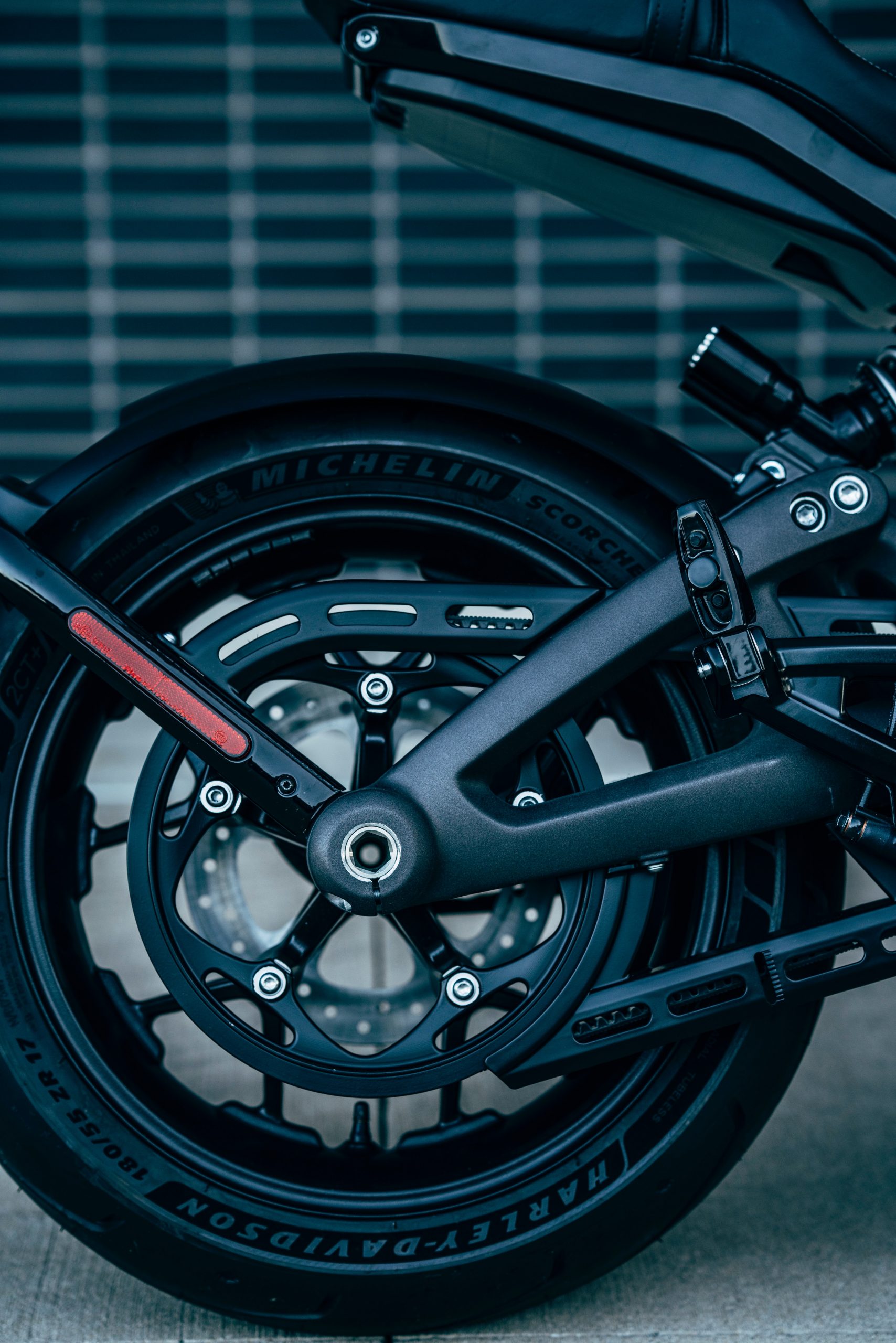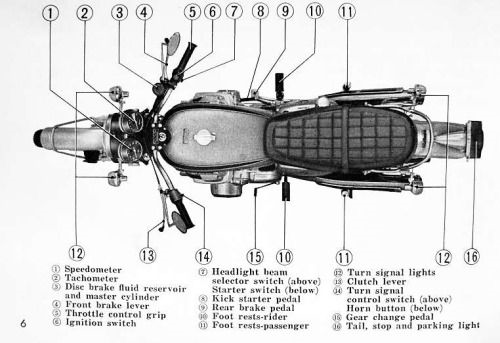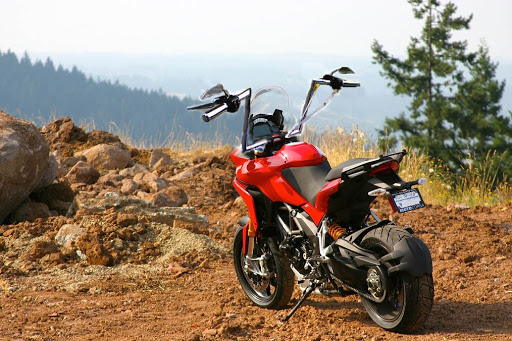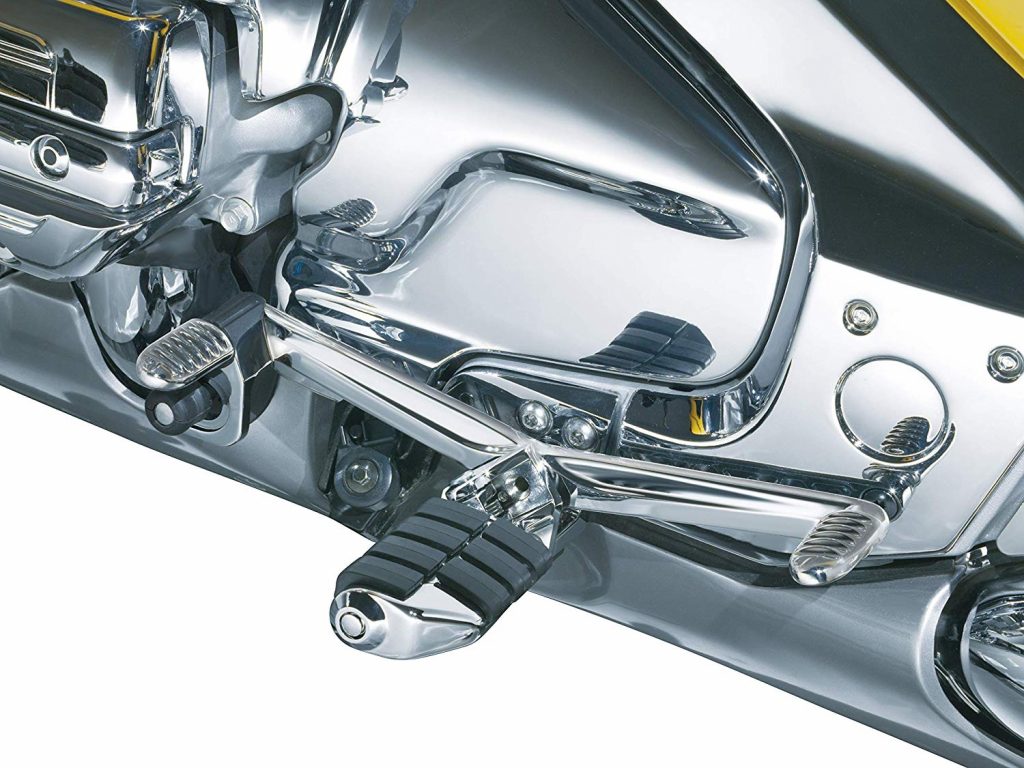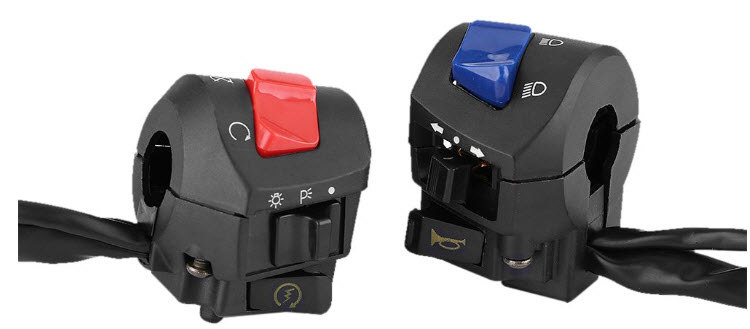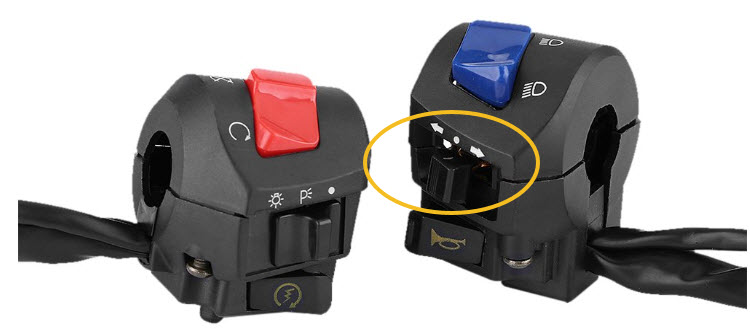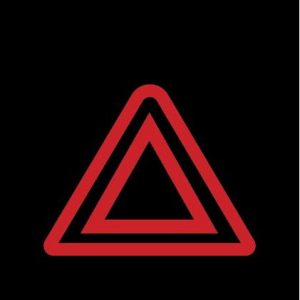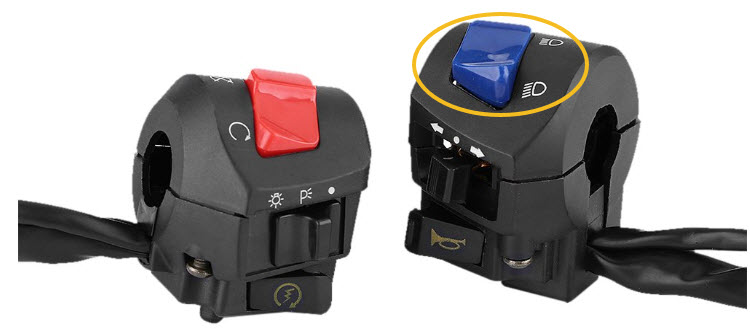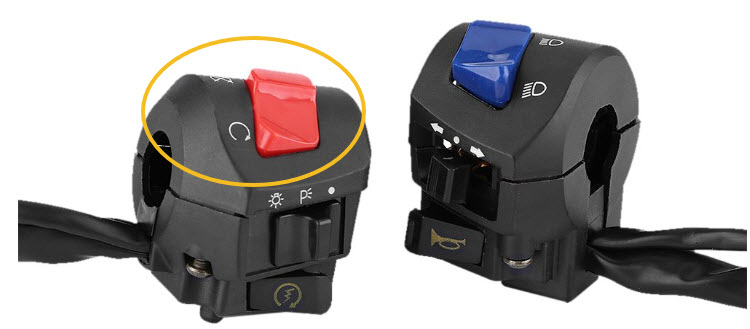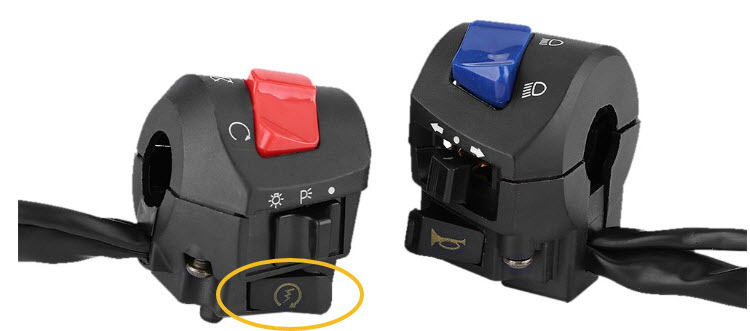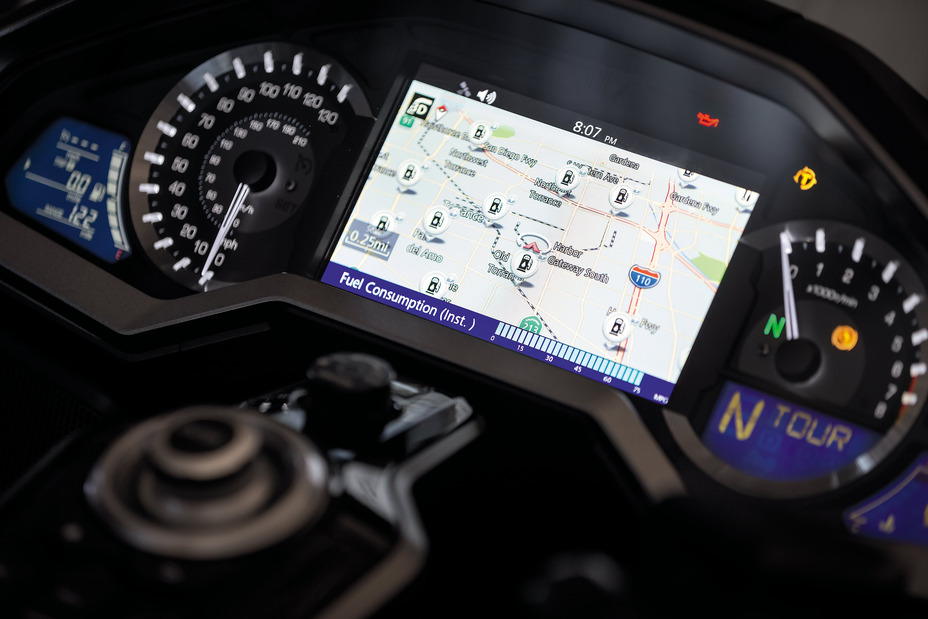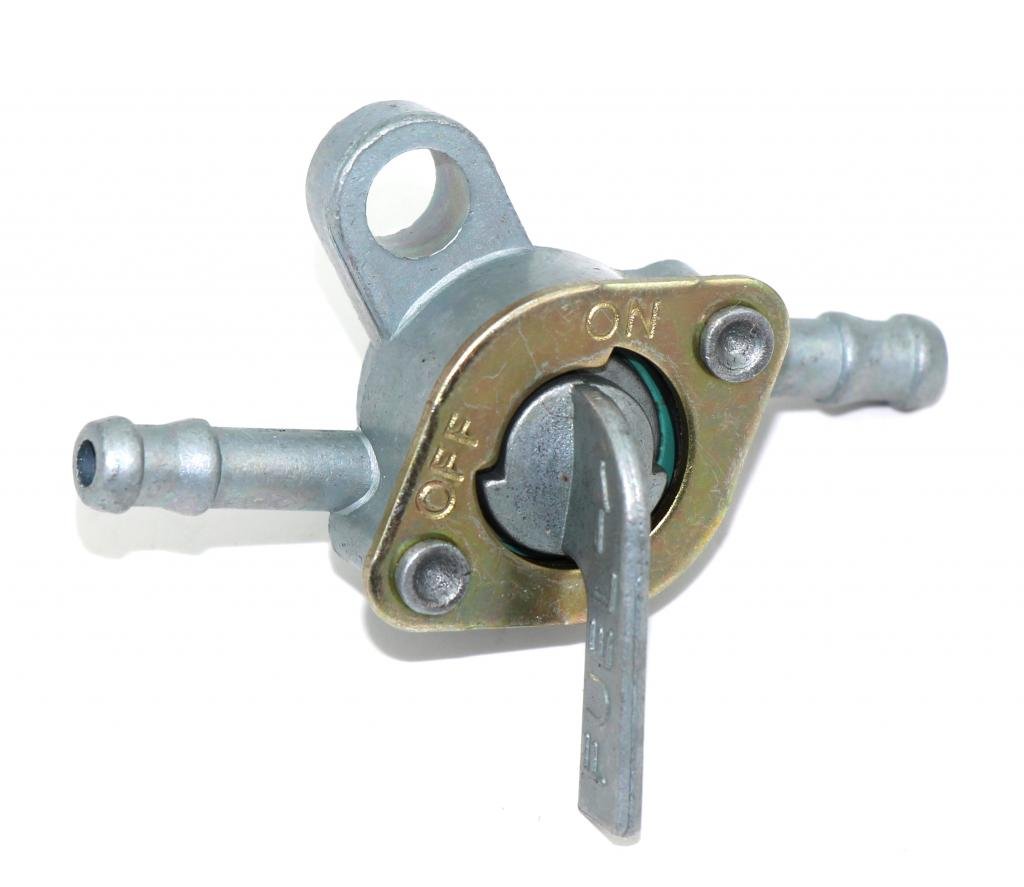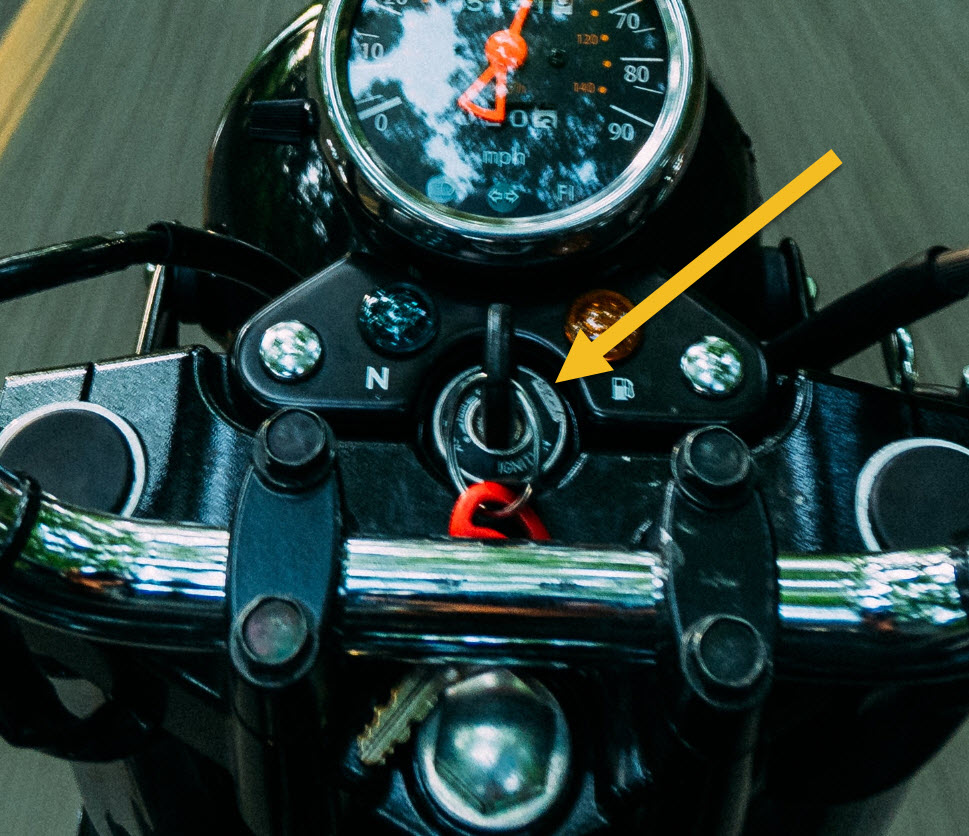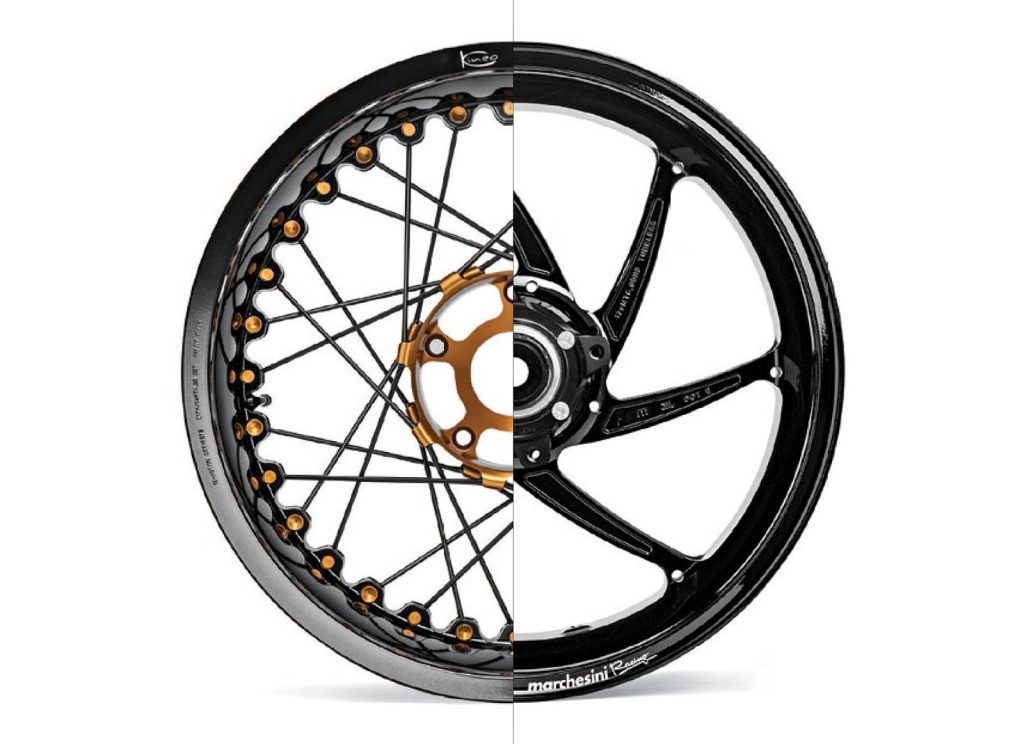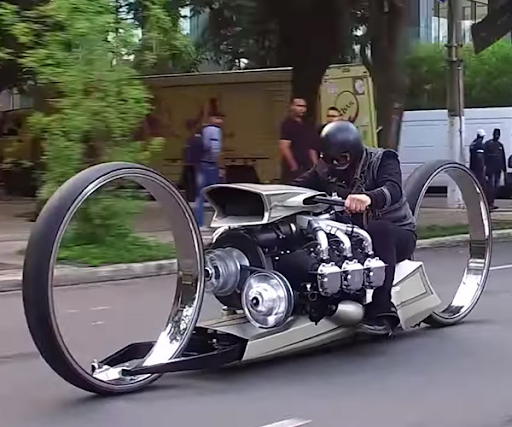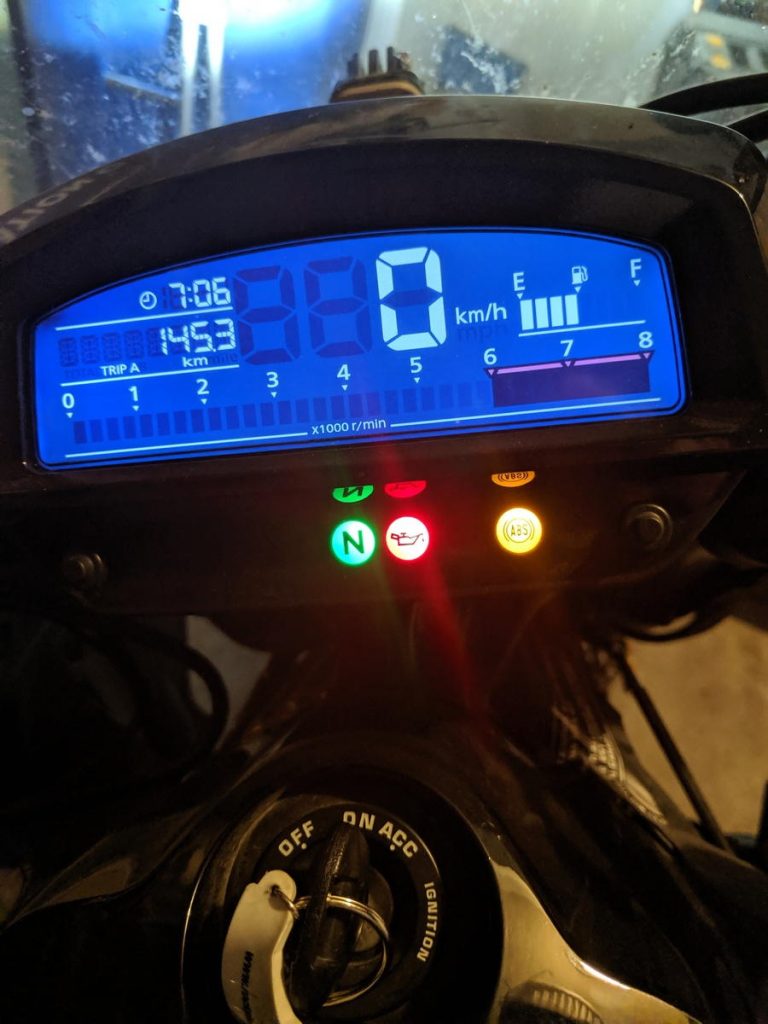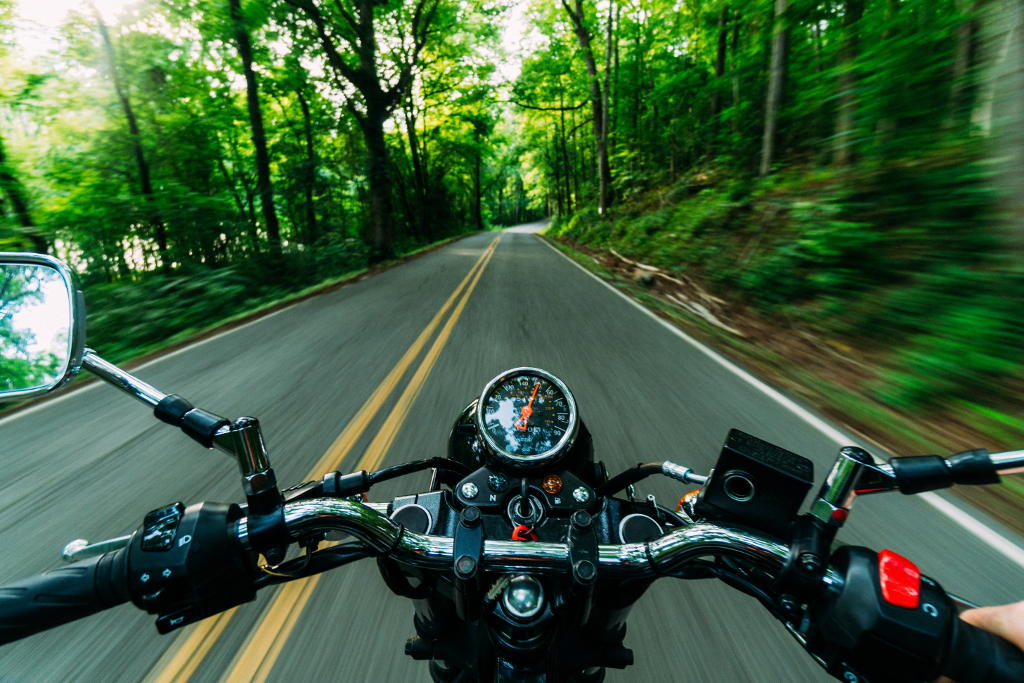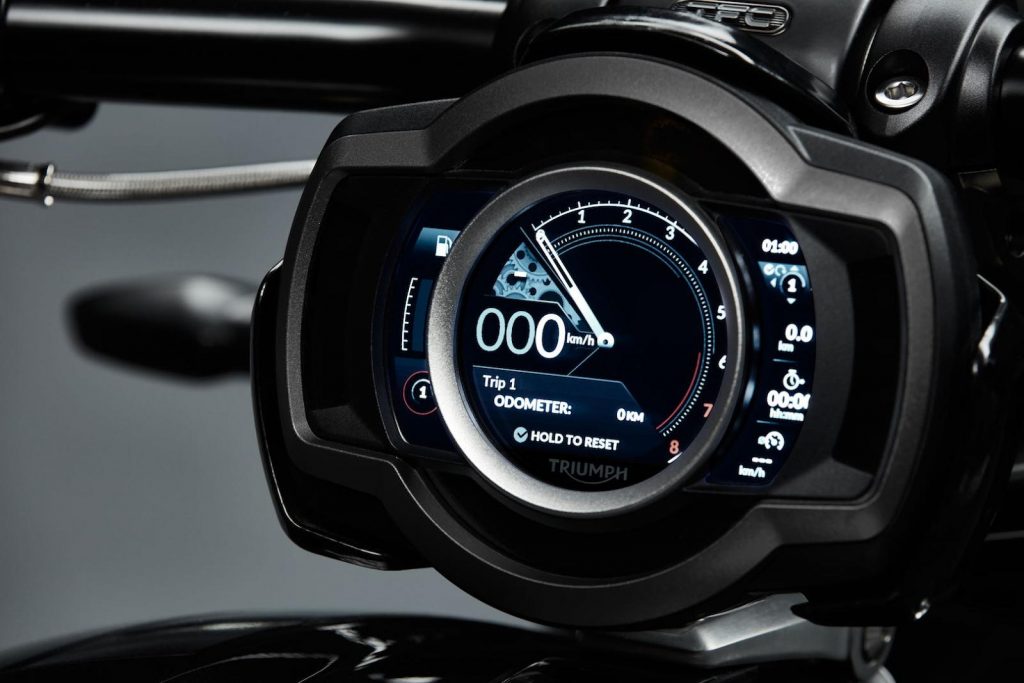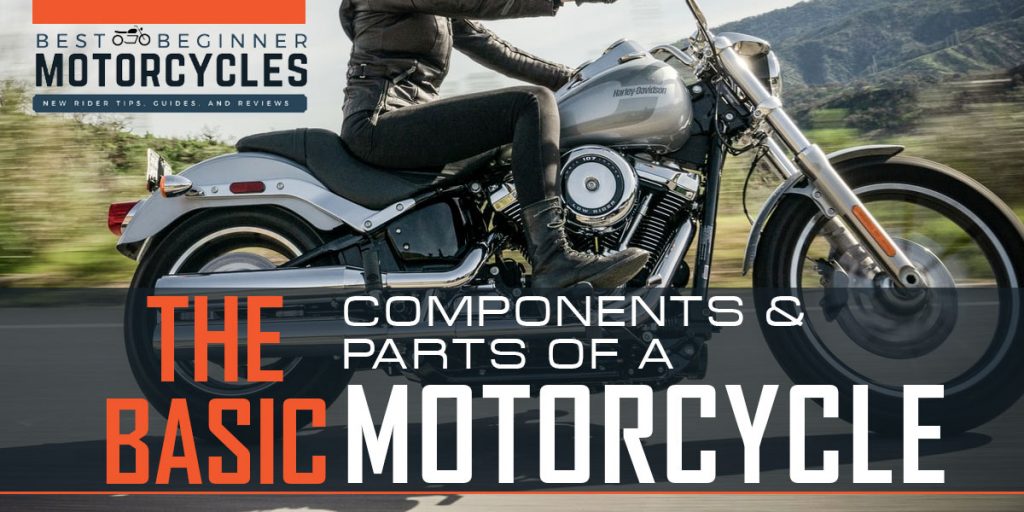In this article, I will be creating a reference guide on the majority of basic/common components & parts of a motorcycle along with a brief description of what the device does and where it may be found on a motorcycle. I will also include varying technologies that can be associated with many of the parts and components in this guide.
The information that I am putting together is based on content that has been or will be published on BBM’s Learn to Ride a Motorcycle section under Guides. This article is intended for new riders and to be used on its own or in conjunction with other media to understand the terms used in the content.
Motorcycle Controls
Hand Controls
Clutch Lever
- Diagram #13: The clutch lever is located in front of the left handgrip along the handlebar.
- To use the clutch lever: Use your left hand to variably pull the clutch lever in towards the grip.
- Using this control separates power from the motor to the rear wheel.
Front Brake Lever
- Diagram #4: The front brake lever is located in front of the right handgrip along the handlebar.
- To use the brake lever: Use your right hand to apply/pull the brake lever towards the grip.
The more force or pressure applied to the brake lever directly controls how much braking force is applied to the front wheel.
Throttle
- Diagram #5: The throttle is built into the right handgrip
- To use the throttle: Place the right hand on the grip and twist the handgrip.
The more you twist the grip, the more fuel gets delivered to the motor resulting in more power/higher RPMs from the motor.
Tech & Accessories
- Adjustable Pull-In-Distance with Clutch & Brake Levers: This accessory or mod typically is found as an aftermarket part. It allows people with shorter hands or people that want to adjust how far they have to reach/where the controls activation points are in their travel range.
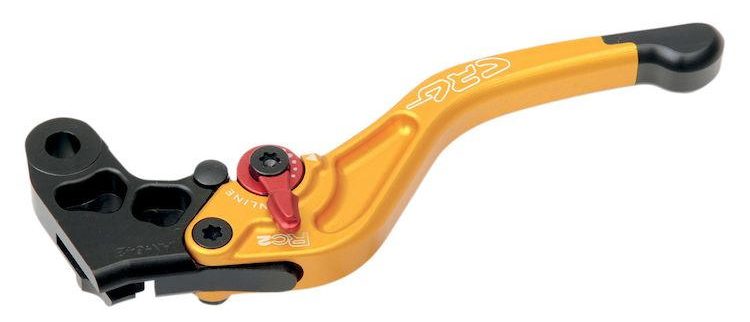
- Short Hand Levers: This type of lever takes customizing your controls one step further by shortening the lever length to require fewer fingers being necessary for the control (typically allowing for only 2 fingers to be used).
- This type of Accessory/Mod is usually done by people that race motorcycles (for most riders this mod is not recommended especially to new street riders).
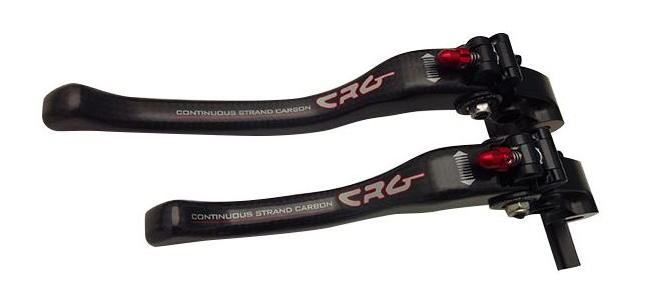
- Riding Handgrips: Every motorcycle has handgrips on either side of the handlebar, but there size and styling can vary depending on the type of bike you have. The grips can usually be swapped out for different styles usually for aesthetic purposes.
- Other reasons to change the handgrip are:
- For a different size grip or material
- To add a feature like heated handgrips
- Some handgrips have sliders on the end to help prevent serious damage to you or your bike in the event of a simple fall.
- Throttle Locks & Cruise Control: Throttle locks are typically aftermarket devices that mount onto the throttle side grip to prevent the throttle from returning to a neutral or to the idle position. And when the grip is let go of, to maintain an RPM that will hold a wanted speed.
- True cruise control is very rarely added after the fact due to the amount of work that would be needed to install correctly. If a bike has cruise control, the bike likely came with it.
- Handlebars: Most motorcycles have aftermarket handlebar replacement options or have factory handlebars that can be adjusted to modify body, limb, wrist and/or hand position.
- Some people take it too far, I think, but to each their own.
Foot Controls
Rear Brake Pedal
- Diagram #9: This brake pedal control is found in front of the right-hand side footpeg.
- To use the rear brake pedal: Using the Ball of your right foot, push down on the pedal.
- The more force used on the brake pedal, the more braking power is delivered to the rear wheel.
Gear Shifter
The gear shifter is the control on a motorcycle that changes the transmission’s gears up or down. Scooters and a few automatic motorcycles may not have this control. There are also some motorcycles that have paddle or button shifting as an option but are few and far between.
- Diagram #15: The shift lever is located in front of the left-hand side footpeg
- To use the gear shift: With your left foot. Use the ball of your foot to push down for downshifting and use the top of your foot “base of your toes area” to push up on the lever to shift up a gear.
- The gear shifter operates sequentially, meaning you have to go through each gear and can’t skip any. The lever itself operates like a ratchet, after changing gears either up or down, you have to let the lever reset itself to the middle position before you can change gears again.
Pegs
The pegs are for resting and protecting your feet as well as to give you a reference point for using your foot controls.
- Diagram #10: Riders pegs location
- Diagram #11: Passenger pegs location (if a bike has it)
- You can have your feet in one of two positions:
- Have the ball of your foot on the peg and move it forward and back on the controls as needed (recommended)
- Have the heal or crest of your foot on the peg but your foot pointed outwards (the foot can get caught on the road in turns). Your feet just don’t want to be hovering over/under the control.
Tech & Accessories
- Heel-Toe Shifter: This accessory is intended to make shifting easier by allowing 2 separate shift levers. One for the toe to shift down and another by the heal to shift up. I have only ever seen this on cruiser/touring motorcycles.
- Floorboard: Floorboards are large flat footpeg replacements that are intended to make a motorcycle ride more comfortable and are often aesthetically pleasing. Typically found on cruisers and touring bikes.
- Highway Pegs: These are pegs that are generally mounted on the frame/engine guards closer to the front of the motorcycle to give an alternative spot to put your feet for a bit of a rest while riding on – you guessed it! – the highway.
- Engine Guards: Typically a subframe mounted to the original frame of the motorcycle to provide protection for the rider and the motorcycle in the event of a fall or crash by having the bike supported generally around the motor as the motor tends to be the widest part of a motorcycle. Usually found on cruiser-style motorcycles.
- Sliders: Sliders are basically the sport/sport touring, and some touring motorcycle equivalent to engine guards.
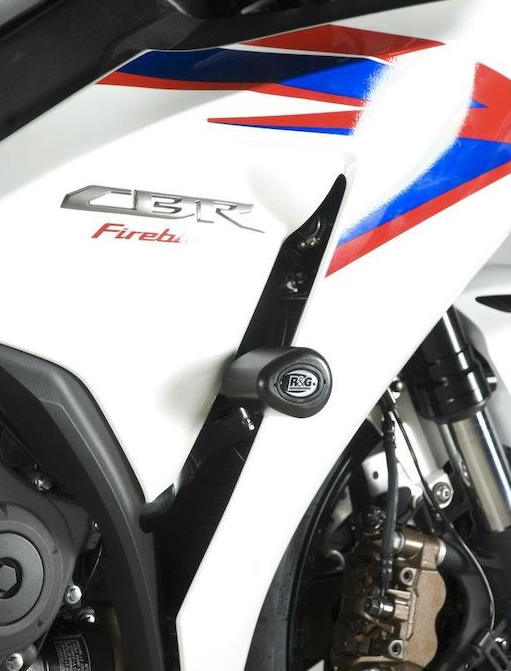
Electronic Controls
*Note: The picture above is a reference to common motorcycle electronic control configurations and will be referenced in descriptions below
Signal Light Controls
- Signal Lights: Signal light controls are most commonly found on the left-hand side of the handlebar, directly beside the left handgrip for easy access from your left hand. To turn on the signal light you move the lever either left or right to signal in that direction. Push the button in to cancel the signal.
- Hazard Lights: Not all motorcycles, especially older motorcycles/ smaller motorcycles, have this control. If they do it will be labeled with the symbol below.
- Headlight: The controls for headlights can be found on the left control module and will most often be a toggle switch between low Beam (the regular running light) and high beam (allows the headlight to shine further).
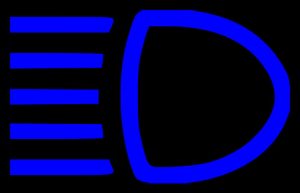
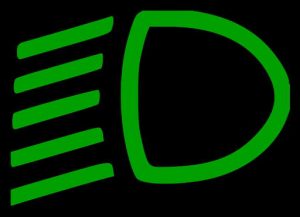
- Engine/Emergency Kill Switch: The Engine/Emergency Kill switch is a toggle switch, which either enables or disables the electricity flow to the engine. (Important to note: it does not turn off the rest of the electronics on the bike).
- This toggle switch will most commonly be found on the right electronic control module directly beside the right handgrip. And will be labeled with symbols (such as the photo below) or labeled plainly with OFF or ON.
- Start Button: The start button is typically found on the right Control module beside the Handgrip. The push-button will typically have the symbol shown on the left or labeled “START”. *Note: This control will only work after the starting prerequisites have been fulfilled.
Tech & Accessories: Most motorcycles only come with the electronic controls listed above, but manufacturers and owners are not limited by these standards. Manufacturers like Honda have the whole gambit of features listed below in their Goldwing lineups and most of the options listed below are options to add to a motorcycle by 3rd party manufacturers.
- GPS
- Reverse
- Stereo
- Ride height/stiffness
- CB radio
- Heated handgrips
Mechanical Controls
- Choke: The choke feature is you almost exclusively with older/carbureted motorcycles. It is used when first starting a cold engine to allow for an easier start.
- If a motorcycle has a choke look for the symbol located to the left. It may be difficult to locate as its location and method of activation can vary depending on the model. Refer to the owner’s manual for clarification.
- Fuel Petcock: The fuel petcock/valve is typically located just below the gas tank on the left-hand side and is most commonly used as a low fuel warning system and to stop fuel from flowing into the engine when the motorcycle is parked.
- Ignition Key Switch: The key switch can be located in a few locations on a motorcycle but is commonly found around the handlebars or on the side of the motor. Turning the key to on will allow electrical power to the rest of the motorcycle. (Depending on the make and model you may have other options such as “Lock” or “Acc”).
Basic Components
Fuel tank
- The fuel tank on most street motorcycles is found between the handlebars and riders seat, above the motor.
- To fill the gas tank many motorcycles require you to use the motorcycle key to open the gas cap on top of the tank. When filling be sure to fill the tank slowly to prevent spilling and splashing.
Cooling
All motorcycles generate heat, requiring a cooling system. The 2 systems motorcycles use are liquid (or radiator cooling) and air cooling.
- Liquid/Radiator: Mostly found on larger motorcycles. This cooling system uses hoses going through the engine to absorb heat and dissipate it through a radiator. This method of cooling is more efficient and allows for motorcycles to not overheat as easily when in heavy traffic due to constantly circulating the liquid. Radiator placement can vary depending on the model.
- Air Cooling: This type of cooling relies on the movement of air passing through heat dissipation fins attached to the motor. If you aren’t moving, then the engine is likely to overheat especially on a warmer day.
Wheels
- Tires: Tires come in different sizes and shapes depending on the type of riding you do and what style of bike you ride. These tires generally are split between:
- Off-Road Tires: Off-road tires are knobby tires that are meant to grip sand and loose terrain to maintain traction.
- Street Tires: Street tires are meant to have as much surface area on the road for the best traction.
- Dual Sport Tires: Dual sport tires are a cross between street and off-road tires. They’re still knobby but cover more area and are rounded so there isn’t much vibration when driving on a paved road.
- Rims: Rims are commonly found in two styles
- Spoked rims: Spoked rims are often used on lighter motorcycles. Multiple Pins under tension suspend the tire/outer rim.
- Hard/Solid Rims: Hard rims are just like car most car rims. One-piece and styled in accordance with the model of the motorcycle.
- Tech & Accessories:
-
- Tires can also have different rubber compounds to accommodate different styles of riding.
- Soft for high grip racing
- Hard for long-distance
- Dual-compound tires for the best of both worlds
- Hubless Rims: This type of rim you will likely not see, except for concept designs or custom builds. It doesn’t have the rim material in the middle of the wheel.
- Tires can also have different rubber compounds to accommodate different styles of riding.
Brakes
With few exceptions, motorcycles have separate brakes and brake controls for the front wheel and the rear wheel. Better braking power is required on the front wheel when compared to the rear wheel so you will often see bigger or dual brakes on the front wheel versus the back.
There have been two types of brake systems developed for motorcycles.
- Disc Brakes: This type of brake dominates the market for most motorcycles especially large ones as disc brakes are capable of considerably more braking power.
- Drum Brakes: This was a type of brake that was used before disk brakes. Some manufacturers may still opt to use this type of brake on smaller motorcycles or as a rear brake, as the rear brake doesn’t utilize nearly as much braking power.
Kickstand
- Side Stand: Virtually all Street motorcycles are outfitted with a side stand. And is always on the left-hand side under roughly under the footpeg.
- Center Stand: Not all motorcycles have this, but the ones that do, are able to have the weight of their bike almost fully supported straight up which can be a benefit for storage and maintenance.
Suspension
- Front Forks: The vast majority of motorcycles use dual Shock-absorbing poles or “forks” to connect the front portion of the bike to the front wheels. These forks absorb most of the impact that would occur during motorcycling.
- Rear Suspension: Rear suspension design can vary greatly compared to the front suspension. In some motorcycles, rear suspension doesn’t exist. The rear suspension works in conjunction with the front suspension to lessen the impact of the road or trail.
- Tech & Accessories: Suspension has been for the most part standardized but has seen some manufacturers and modders playing with concept designs such as airbag suspension designs that provide an alternative to the traditional hydraulic/spring designs.
Exhaust/Pipes
The main purpose of exhaust pipes is to expel engine fumes away from the rider as well as direct and muffle the engine noise.
- Most exhaust pipes will run along the lower part of a motorcycle to the back, exhausting behind the riders. Some motorcycles exhaust out the lower sides now depending on make and model.
- Pipes are one of the most common modifications to motorcycles, typically to give the motorcycle a more aggressive/louder sound, and sometimes change the look or location of pipes, but can also have performance advantages.
Seat
- Driver: Every motorcycle obviously has a driver seat but the size, shape, and location of the seat can differ depending on the type of motorcycle you ride.
- Passenger: Not every motorcycle has the option of a passenger seat. The motorcycles that do have backseats are located directly behind the rider. Rear seats also vary in size and shape depending on the motorcycle.
- Tech & Accessories: Seats are also a very common modification and have a wide range of options available to modify the comfort and ergonomics of a motorcycle. To list a few:
- Aftermarket Seats: For most motorcycles, a wide range of seats are available if you don’t like the one that came with your motorcycle.
- Backrests: You can often get backrest for not just the passenger but for the rider as well. This sometimes requires the replacement of the OEM seat.
- Cushions: Instead of changing the seat you can add cushions or modify the seat with extra padding.
Battery
The battery in a motorcycle is just like a car, providing power to engine and accessories, and is almost always located under the rider’s seat.
- Motorcycle batteries are typically much smaller than cars so they may not last as long without the engine running.
Dashboard/Dash Cluster
The Dash can vary in its location and configuration depending on the make and model. But is always found above, on, or below the handlebars as it needs to be in plain view when sitting on the motorcycle.
- Warning Lights: Most street motorcycles have warning indicators, the most common being listed below, as part of their HUD. As motorcycles become more complex you may see the additional warning. *Refer to the owner’s manual for clarification.
-
- Tachometer: this device tells you the current RPM value the motorcycle is producing. Not all motorcycles have a tachometer.
- Speedometer: Speedometer tells you how fast you are going in miles/kilometers
Tech & Accessories:
- Analogue Dashboard: Simple dash that gives information using a needle and a dial, as well as simple light-up warning indicators.
- Digital Dashboard: This usually gives the same info as a basic analog dash but in a digital readout. May have some extra features for tracking milage or ride modes built-in.
- LCD dash: Motorcycles that have an LCD dash are usually very techy. What I mean by that is they will have many options and or features that you couldn’t fit into a digital or analog dash. Some of those may include:
- Performance adjustments
- Safety features
- Options like radio and GPS
Lights
Like a car, the headlight is located on the front portion of the motorcycle providing light when needed. Most motorcycles have the headlights turn on automatically.
- Signal: Signal lights or “Blinkers” are flashing SETS of lights on the front and back of a motorcycle that indicates your intentions (change lanes or turn) to the rest of the traffic.
- These lights are controlled by the indicator switch found on the handlebars.
- Brake Light: This is a light located on the rear of the motorcycle that will light up when brake controls are applied.
- Replacements & Aftermarket Upgrades: The lights on a motorcycle more often than not can be replaced or upgraded with aftermarket parts if the manufacturer parts are not sufficient.
- People replace the lights on a motorcycle in favor of lights like LCD or HID for headlights or LCD lights for signals as they typically are much brighter, look cooler, last longer and or are more power-efficient
Storage
Motorcycles by default don’t generally come with any storage on them with the exception of certain models of motorcycle made for touring long distances. So if you want to store things on the bike you have to get OEM/3rd party accessories to bring stuff along with you. Some of the common options are listed below:
- Saddlebags: A set of bags that mount or drape on the rear fender or seat to allow for storage.
- Rear Carrier Bag: This type of storage can be either a bag or box that can be mounted or strapped down to a rear seat or mounting point on the bike.
- Rack: Usually an addon mounting point behind the rear seat or that replaces the rear seat in favor of optional mounting points for bags or luggage.
- Tank Bag: This is a bag that either has straps or magnets that mount to the gas tank to give you storage options.
- Backpack: Most people just getting a bike use a backpack to bring items with them on rides. If you use a backpack, try and use one that doesn’t move much when riding or one specifically designed for motorcycle riders.
I have listed all the basic information that, I feel, should relate to new Motorcyclists that are learning to ride. In my articles, anything that hasn’t been listed will be clarified or expanded upon in the corresponding articles in this series.

